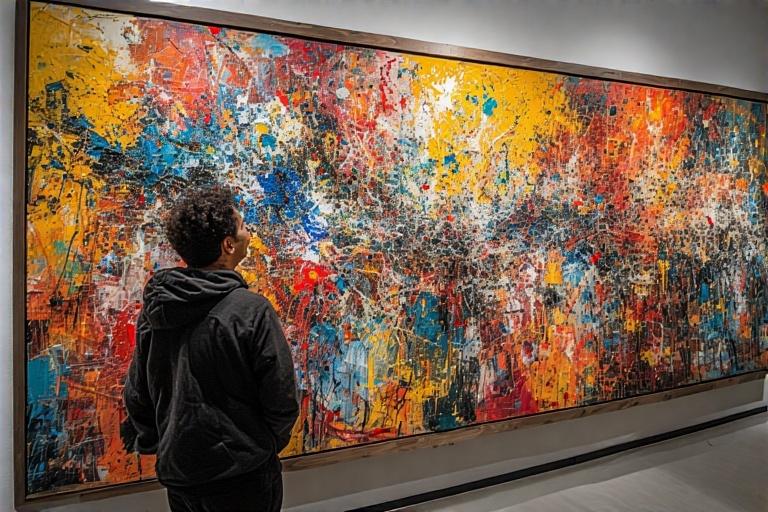Understanding the Dynamic Interplay of Figurative and Abstract Painting in Contemporary Art

Art has always evolved through experimentation, challenging traditional boundaries and offering new perspectives on the world around us. Among the many styles that have shaped modern visual art, figurative and abstract painting stand out as two powerful, sometimes contrasting, approaches. Both have rich histories and unique expressive potentials, yet contemporary artists often blur the lines between them to communicate more nuanced stories and emotions.
When exploring the world of figurative and abstract painting, it becomes clear how these styles complement and contrast with each other. Figurative painting focuses on recognizable subjects—humans, objects, or scenes—rendered with varying degrees of realism or stylization. In contrast, abstract painting seeks to transcend direct representation, focusing instead on colors, shapes, textures, and forms to evoke emotions or ideas. The dialogue between these two styles enriches the viewer’s experience, offering both familiarity and mystery.
The Historical Roots of Figurative and Abstract Painting
Figurative painting has been central to art since prehistoric times, serving as a direct visual documentation of the human experience. From the detailed portraits of the Renaissance to modern realism, figurative art captures tangible reality and invites viewers to connect with recognizable forms.
Abstract painting, however, emerged more prominently in the early 20th century as artists sought to break away from traditional representational art. Pioneers like Wassily Kandinsky and Piet Mondrian championed abstraction as a means of expressing spirituality, emotion, and intellectual concepts through non-representational forms. This revolutionary approach opened up new avenues for creativity and interpretation, emphasizing the power of color and composition over literal depiction.
Characteristics That Define Each Style
To appreciate the synergy and tension between figurative and abstract painting, it’s essential to understand their defining characteristics:
-
Figurative Painting: Represents identifiable subjects with varying degrees of realism; often narrative-driven, inviting empathy and storytelling.
-
Abstract Painting: Emphasizes non-representational elements such as color, line, and form; focuses on evoking mood, atmosphere, or conceptual ideas.
-
Hybrid Works: Many contemporary artists merge figurative and abstract elements to create layered meanings, challenging viewers to decipher multiple levels of interpretation.
Contemporary Trends Blending Figurative and Abstract Approaches
In today’s art world, boundaries between styles are increasingly fluid. Contemporary painters often incorporate both figurative and abstract elements in a single work, reflecting the complexity of modern life and human psychology. This fusion allows artists to explore identity, memory, and emotion in more intricate ways than either style could achieve alone.
For example, a portrait might be partially abstracted with bold brushstrokes or fragmented forms, conveying not only the subject’s appearance but also their emotional or psychological state. Similarly, abstract backgrounds can provide contextual depth or contrast to a central figurative element, creating a dynamic visual tension.
The Emotional Power of Figurative and Abstract Painting
Both styles communicate emotion, but they do so differently. Figurative painting often elicits empathy through recognizable subjects and scenarios. Viewers connect to human expressions, gestures, or symbolic objects, making the experience intimate and direct.
Abstract painting, meanwhile, appeals to a more visceral or subconscious response. Its use of vibrant colors, chaotic forms, or serene shapes can trigger feelings ranging from excitement to calmness without relying on a narrative. The combination of these approaches in contemporary works enriches the emotional palette available to artists and audiences alike.
Collecting and Appreciating Figurative and Abstract Works
For art collectors and enthusiasts, understanding the interplay between figurative and abstract painting can deepen appreciation and inform acquisitions. Both styles offer distinct aesthetic and conceptual values, and works that integrate both can be particularly compelling additions to any collection.
Collectors should consider an artwork’s emotional resonance, technical execution, and how it fits within their personal tastes and the broader context of their collection. Exploring galleries, exhibitions, and artist studios can provide insight into current trends and emerging talents who skillfully blend figurative and abstract elements.
How Figurative and Abstract Painting Influence Other Art Forms
The influence of figurative and abstract painting extends beyond canvases. These styles impact sculpture, photography, digital art, and even performance art. The conceptual frameworks developed within painting inspire artists across mediums to explore form, expression, and narrative in innovative ways.
For instance, abstract principles guide installations that manipulate space and perception, while figurative elements ground multimedia projects in human experience. This cross-pollination fuels continuous artistic innovation and expands the possibilities of contemporary art.
Conclusion: Embracing the Richness of Figurative and Abstract Painting
Figurative and abstract painting remain vital components of the art world, each with unique strengths and expressive capabilities. Their ongoing interplay reflects the evolving nature of creativity and human understanding. Whether through the clear narrative of a figurative piece or the emotional depth of abstraction, these styles invite viewers to engage deeply with art—and with themselves.
By exploring works that merge these traditions, art lovers can discover a richer, more nuanced visual language that speaks to the complexities of modern life. This dynamic fusion ensures that figurative and abstract painting will continue to inspire and challenge audiences for generations to come.
- Art
- Causes
- Crafts
- Dance
- Drinks
- Film
- Fitness
- Food
- Jogos
- Gardening
- Health
- Início
- Literature
- Music
- Networking
- Outro
- Party
- Religion
- Shopping
- Sports
- Theater
- Wellness


